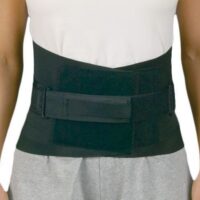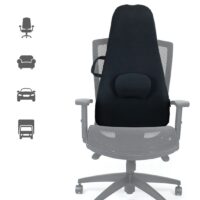Back Pain Physiotherapy
Article by John Miller

Back Pain Physiotherapy: What to Expect?
Introduction
Back pain, a prevalent issue in Australia, significantly affects people’s lives. Physiotherapy has proven highly effective in managing and alleviating back pain. This comprehensive guide, informed by a physiotherapist’s perspective, will prepare you for what to expect during your physiotherapy journey.

Understanding Back Pain and Its Physiotherapy Management
Back pain arises from various factors, including muscle strains, ligament injuries, spine arthritis, or disc issues. The latest research underscores the effectiveness of physiotherapy in not only reducing pain but also in improving mobility and strengthening back muscles to prevent future injuries. A physiotherapist adopts a holistic approach, addressing the pain’s root cause.
Initial Assessment: The First Step
Your journey begins with an initial assessment involving:
- A detailed discussion of your medical history and symptoms.
- Physical examinations to pinpoint pain and mobility issues.
- Posture and movement analysis to gauge functional abilities.
Developing a Personalised Treatment Plan
Based on your assessment, a tailored treatment plan includes:
- Manual therapy, such as massage and joint mobilisation.
- Targeted exercises for strengthening and stabilising the back.
- Postural and ergonomic advice to avoid future injuries.
Ongoing Sessions and Home Exercise Regimens
Physiotherapy typically involves multiple sessions. During these, your therapist monitors your progress and adjusts treatments as necessary. Crucially, you’ll receive home exercises essential for your rehabilitation.
Pain Management and Patient Education
An integral part of physiotherapy is educating patients about their condition and effective pain management strategies, including heat or cold therapy, relaxation techniques, exercise options and lifestyle adjustments.
Long-Term Management and Preventive Strategies
The ultimate goal extends beyond immediate pain relief; it involves equipping you with exercises and knowledge to maintain a healthy back and prevent recurring issues.
What to Expect in Terms of Results
The effectiveness of physiotherapy varies. Some experience immediate relief, while others see gradual improvement. Consistent adherence to your physiotherapist’s advice is key to long-term success.
Recent Advances in Physiotherapy for Back Pain
Emerging research highlights the success of innovative physiotherapy techniques in treating back pain. These include advanced manual therapies and technology-assisted exercises that have shown significant improvements in pain reduction and mobility enhancement.
When to Seek Professional Help
If you’re experiencing back pain, it’s crucial to consult a physiotherapist or doctor early. They can diagnose the issue and prevent it from worsening.
Conclusion
Physiotherapy presents a hopeful avenue for tackling back pain. Knowing what to expect enables you to engage in your treatment confidently. Active involvement in your treatment plan is vital for optimal outcomes.
Further Information and Resources
For in-depth articles on specific back conditions, treatment techniques, and success stories, please visit our Back Pain Articles, where you can find a wealth of information from experienced physiotherapists.
What to Do Next?
- If you’re suffering from back pain, start by avoiding activities that exacerbate your pain.
- Apply heat or cold packs for temporary relief.
- Book an appointment with a physiotherapist or doctor for a professional assessment.
- Follow the exercise and treatment plan prescribed by your physiotherapist.
- Keep a record of your symptoms and report any significant changes to your physiotherapist.














































































